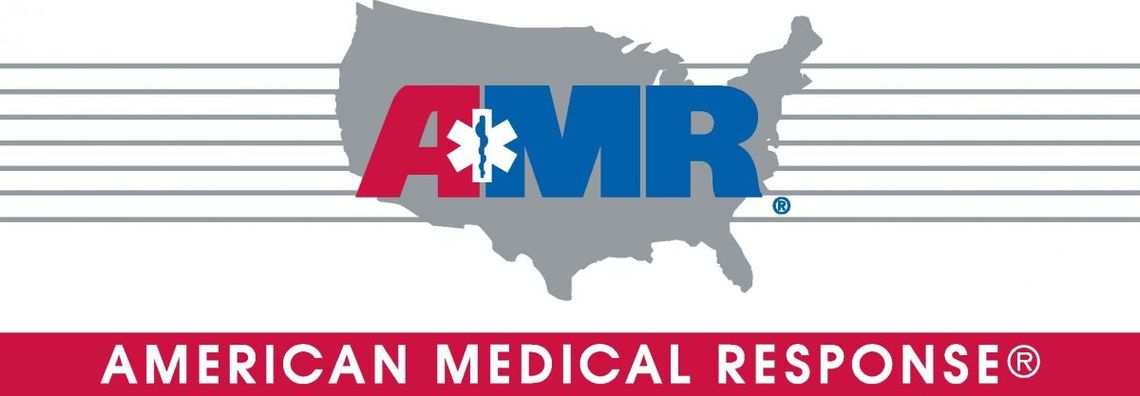By Ryan Wilson
AMR paramedics are cautioning the public to remember: Soaring temperatures and high humidity can kill. Ryan Wilson, operations manager for American Medical Response ambulance service, said, “Even the healthiest among us can suffer heat exhaustion or heat stroke, but elders, children up to four years of age, chronically ill individuals, obese people and substance
abusers are more vulnerable.”
Wilson said, “There are specific ways to prevent heat illness, and, when prevention fails, we all need to recognize heat illness quickly and help the victim fast.” Wilson advised: Heat illness can occur inside as well as outside, especially in buildings with no air conditioning or ventilation.
Prevention: A major part of avoiding heat illness is to drink lots of non-alcoholic fluids continuously. Water and commercial “sports drinks” are best. Drink no alcohol and avoid energy drinks and large quantities of coffee, since alcohol and, to a lesser extent, caffeine make the body lose fluid, not store it. If you have no salt restrictions in your diet, mix a pinch of salt in each quart of water you drink.
Start drinking those correct fluids hours before starting any strenuous effort. Keep taking in the fluids throughout the day and evening. Beware: It is possible to get ill from drinking too much water or sports drinks, so don’t drink huge quantities.
Work outside only in the cooler morning and evening hours, if possible. Take frequent breaks and stay in the shade as much as you can. Wear loose fitting, light colored clothing made of fabric that “breathes” such as cotton. Wear a broad-brimmed, loose weave hat and take it off from time to time. If you’re out walking, use an umbrella or parasol.
If your home has no air conditioning, spend the hottest hours of the day in a library, shopping mall, senior center or other public facility that is air conditioned. In a heat wave, friends and family of elderly or disabled people should check on them frequently.
An early symptom of heat exhaustion is feeling light-headed or dizzy. Heat exhaustion also includes heavy sweating with cool, clammy sometimes pale skin. Heat exhaustion sometimes brings on headache, nausea, vomiting, irritability, weak pulse and rapid but shallow breathing. Body temperature is usually normal or only slightly elevated.
First aid for heat exhaustion is to move the person to a nearby cooler place. Have the person lie down and elevate the feet eight to 12 inches. Loosen clothing and fan the victim without chilling him or her. If, and only if the person is fully alert, give sips of water. Gently massage cramps. Watch the patient since heat exhaustion can quickly turn into heat stroke. Call 911 for paramedics. Full recovery usually takes several hours.
Heat stroke, a potentially fatal form of heat illness, is sometimes mistakenly called “sun stroke.” The term “sun stroke” is misleading, since heat stroke can also occur indoors.
The key to identifying heat stroke is high body temperature. Heat stroke is known by hot, dry, sometimes red or mottled skin, deep breathing followed by shallow breathing and large, dilated pupils. But sweat can still be present if humidity is high. Because sweat does not evaporate quickly in high humidity, a heat stroke victim might still be sweaty although they have stopped producing sweat. Further, fit people suffering heat stroke might still be sweating profusely. The victim may lose consciousness and have seizures.
First aid for heat stroke is to remove the victim from the source of the heat and cool him or her immediately. The body loses heat 25 times faster in water than in air, so, if possible, give a cool – but not cold – bath or put cool wet cloths on the body and continuously fan the victim. If an electric fan is available, blow it across the victim or create a manual fan with a stiff piece of paper. Keep the cloths cool and wet. Do not cover the face with the cloths.
If manufactured cold packs are available, use those while following the printed direction. Homemade ice packs can help lower the heat exhaustion or heat stroke victim’s temperature. Don’t put ice directly on the patient’s skin. Put some ice in ziplock bags and wrap each bag in a thin towel. Place a bag on the parts of the body where veins are close to the surface: one on each side of the neck, under each armpit, one on the palm side of each wrist, just above the top of the foot and on each side of the groin. Be careful using a water hose to cool the victim. Explain what you’re going to do and don’t spray the face directly.
With any form of cooling, don’t cool the victim to the point of shivering. The purpose of shivering to keep heat inside the body.
Because heat stroke can be fatal or cause permanent brain damage, call dial 9-1-1 for your local ambulance service immediately. Be certain someone has called for the ambulance.
Never give anything by mouth to someone who is not fully alert or is not breathing well on his or her own.


Comment
Comments